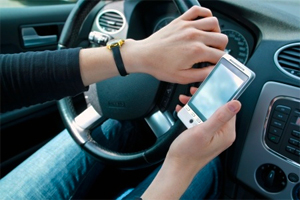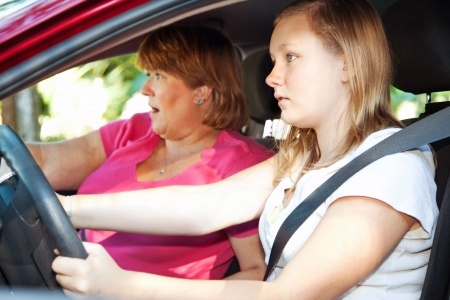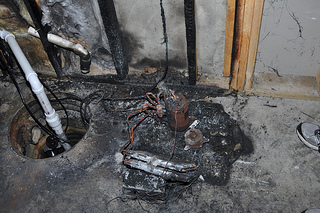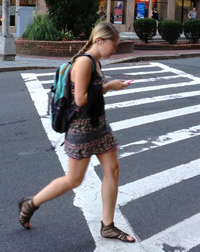Posts Tagged ‘lawyer’
New Safety Standard Approved for Baby Cradles and Bassinets
 Bassinets and cradles will soon have to meet a federal standard for safety.
Bassinets and cradles will soon have to meet a federal standard for safety.
On Sept. 30, the Consumer Product Safety Commission (CPSC) announced it has approved a new mandatory standard in a 4-1 vote. Bassinets and cradles have long had no mandate, despite hundreds of reports of personal injuries and deaths over the years. Meanwhile, full-sized cribs and other baby furniture have faced regulation.
From November 2007 through March 2013, the CPSC reported 132 deaths involving bassinets and cradles. The agency received a total of 426 incident reports.
Bassinets and cradles are intended for infants up to 4 or 5 months old, but some organizations, such as Consumer Reports, have recommended parents move directly to cribs because of safety concerns and their short life.
Children have been injured when bassinets and cradles collapse in the middle or tip over. Infants can also suffocate by rolling into pillows, blankets or a mattress in the cradle of the bassinet. One danger has been swinging or hammock-style cradles which are suspended from a frame. In 2009, Amby Baby USA recalled 24,000 Amby Baby Motion Beds after two infants died in them.
For years, manufacturers have been encouraged to meet the voluntary standards set by the ASTM International (formerly known as the American Society for Testing and Materials). These will be incorporated into the CPSC’s new standard, but the CPSC has recommended five modifications. They include changing the pass/fail standard for mattress flatness, creating an exemption to the mattress flatness requirement for bassinets that are less than 15 inches across and making the dummy used to test stability smaller.
Read more about the new safety regulations for bassinets and cradles.
Buying a Safe Bassinet or Cradle
If you are a parent buying a new bassinet or cradle, our Boston product liability lawyers share these tips:
New standard is not effective yet. The final rule will be published in the Federal Register, then take effect six months later. But manufacturers have an additional 12 months after that before they must comply.
Do not use past 5 months old. Follow the manufacturer’s guidelines on the appropriate weight and size of babies. The CPSC advises use stop at 5 months of age or when babies can push up on their hands and knees.
Can it stop swinging? Make sure swinging cradles can made still once a baby is asleep.
Make sure it is stable. Check screws and bolts periodically to see if they are fastened. If the product’s legs fold for storage, make sure they have solid locks so your child will not fall.
No pillows. Do not use pillows. Make sure the mattress and padding fit snugly. Avoid purchasing a baby product with long strings, bows or other accessories which a baby can grab onto.
Read More
Massachusetts Texting While Driving Ban: 3 Years Today
 Drivers may claim they are not texting behind the wheel. But Massachusetts State Police say that at least 440 of them were doing just that in June.
Drivers may claim they are not texting behind the wheel. But Massachusetts State Police say that at least 440 of them were doing just that in June.
State Police cited these drivers over three weeks in the Merrimack Valley, part of a federally funded enforcement grant involving 12 communities. Another 509 drivers were ticketed for impeded operation, after being caught engaged in distractions such as reading and grooming while driving.
The numbers are notable as today marks three years since the Safe Driving Law took effect in Massachusetts, placing new restrictions on drivers under 18 years old and banning all drivers from texting while driving. Three years later, how well are you complying with the law?
The law bans texting by drivers, including reading, writing or sending messages. This includes text messages, e-mails and messages sent through social media sites such as Facebook and Twitter. Drivers cannot text while driving or sitting at red lights, intersections or on other public ways. Texting while driving is a primary offense, meaning police can pull drivers over when they suspect the behavior.
The law also covers more than cell phones. It bans communicating through any device while you are driving, including tablet computers and laptops.
Fines for Texting While Driving in Massachusetts
Drivers are permitted to talk on cell phones in Massachusetts. But operators under 18 years old are banned from all cell phone use, a measure passed as part of the Safe Driving Law.
One area of confusion with the texting while driving ban has been the use of GPS, especially GPS apps in smartphones. The Registry of Motor Vehicles reported back in 2010 that such use was not a violation of the law, though State Police said they would use discretion with GPS units and could cite drivers for “unsafe operation.”
Across the country, 41 states ban texting while driving. Fines in Massachusetts drivers are $100 for the first offense, $250 for the second and $500 for third and all subsequent acts. When a driver causes serious injury or death as a result of texting, they can also face criminal charges.
One Massachusetts newspaper has called for more. In today’s edition, the Worcester Telegram & Gazette noted that drivers who violate the law do not face any impact on their license or auto insurance rates and called on the Legislature to strengthen laws.
“To create a true deterrent, lawmakers must strengthen the penalties, particularly for second and subsequent offenses,” the Telegram & Gazette wrote.
Maybe the Legislature will review the law. Enforcement will continue. State Police have launched Phase 2 of their “Text with one hand, ticket in the other,” campaign in the Lowell and Merrimack Valley area.
But the discussion goes beyond a $100 ticket to safety and responsibility on the road. Any cell phone use that takes a driver’s attention off the road is negligent and can cause a car accident resulting in serious injuries or death. So we ask again. Have you complied with the law? Are there are additional steps you could take?
If you have any doubts about safety, or the terrible effects three seconds of inattention might bring, please watch this video: “From One Second To The Next,” by Werner Herzog. It is part of AT&T’s It Can Wait campaign.
Related:
Texting While Driving Crackdown Nets 440, Lowell Sun.
Tougher penalties needed, Worcester Telegram & Gazette.
Safe driving law applies to more than just texting behind the wheel, The Boston Globe.
Read More
October Sees the Most Auto Accident Claims from Teen Drivers
 Sept. 30 will mark three years since the state of Massachusetts strengthened its laws for teen drivers.
Sept. 30 will mark three years since the state of Massachusetts strengthened its laws for teen drivers.
Under the Safe Driving law, which took effect in 2010, teen drivers age 16 ½ to 18 are banned from all cell phone use and there is no texting while driving for operators of any age. The Junior Operator Law, which was passed in 2007, bans teen drivers from carrying passengers under the age of 18, except siblings. They also cannot drive between the hours of 12:30 a.m. and 5:00 a.m., unless accompanied by a parent.
Massachusetts is not alone; most states now have Graduated Licensing Laws restricting teen drivers in some way. In 47 states, novice drivers have passenger restrictions and 48 states limit nighttime driving. Teens are banned from all cell phone use in 37 states.
There is good reason for the laws: For each mile of roadway, teens age 15- to 20-years-old are three times more likely to die in a car accident than other drivers, according to the National Highway Traffic Safety Administration.
Now is a good time to observe how well your teen driver is obeying the laws. Every year, the AAA Foundation for Traffic Safety reports June, July and August see the largest number of teen driving deaths. But one nationwide company, State Farm Insurance, reports October is another dangerous time. It sees the most claims from 16- and 17-year-old drivers in this month, up 15 percent from other times.
Teen drivers get into auto accidents because they lack experience, are sensitive to distractions and do not always follow the rules. A few tips for helping your Massachusetts teen driver:
Say No to Teens Using Their Cell Phones. Many teens are texting while driving, despite the laws. In a 2011 study of 8,500 U.S. high school students age 16 and older, 45 percent admitted to texting or e-mailing while driving in just the past 30 days. The study was conducted by the Centers for Disease Control and Prevention and was published in the June issue of Pediatrics Journal. These teens were more likely not to wear their seat belt.
Encourage your teen to turn their cell phone off or put it in the backseat while driving. Taking a peek at text messages, e-mails or their Facebook page is not allowed. That includes while sitting at traffic lights and intersections where they need to look out for other traffic, as well as pedestrians and cyclists.
Limit Teen Passengers in the Car. Drivers under 18 in Massachusetts are not allowed to carry passengers under the age 21, except siblings. Be vigilant on this point with your teen. Among 16- and 17-year-old drivers, there is a 44 percent higher chance they will be killed in a crash with even one passenger under 21 years old, according to the AAA Foundation for Traffic Safety. The number multiplies with each additional passenger under 21, but decreased over 60 percent for each passenger age 35 or older.
Test Drive School Zones. Let your teen observe from the passenger seat as you drop them off to school and pick them up. You will encounter traffic, bicyclists and children walking, which will be new and potentially stressful for them as a driver (even if they traveled this area during their Driver’s Education practice hours). Point out how you adjust to the activity and decrease your speed.
If you do not drive to school, take this ride outside school hours and then let them drive. The goal is to make them aware of the challenges and make them comfortable in case they have to drive at some point.
Cyclists and Pedestrians. Remind your teen of what they learned in Driver’s Education class. Make sure they stop well behind the crosswalk at intersections and always let pedestrians pass. Remind them that cyclists can travel the full width of the road. Remind them to make sure cyclists are not approaching when they open any doors in the car.
Other Driving Safety Tips. These are the foundation of all driving safety tips, but always worth a reminder for safety’s sake: Talk to your child about always wearing a seat belt, following the speed limits and never using drugs or alcohol while operating.
The most important things are to talk to your children about driving and to set a good example yourself when they are in the car with you. Visit this web page for additional suggestions.
Related:
Teen Driver Safety Week
Study: Teens who text and drive take even more risks, USA Today
Read More
Attorney Marc Breakstone Comments in Massachusetts Lawyers Weekly Article: “Too Much Information? Lawyers Split Over Online Juror Surveillance”
 Massachusetts Lawyers Weekly writes this week about the divide among lawyers on monitoring social media use and Internet activities by jurors. It is a common practice, especially in Massachusetts, which does not allow attorney-conducted voir dire. There have been no ethical opinions on the subject issued in Massachusetts. Not all attorneys are comfortable with it, but some consider it fair.
Massachusetts Lawyers Weekly writes this week about the divide among lawyers on monitoring social media use and Internet activities by jurors. It is a common practice, especially in Massachusetts, which does not allow attorney-conducted voir dire. There have been no ethical opinions on the subject issued in Massachusetts. Not all attorneys are comfortable with it, but some consider it fair.
“I see no ethical issue. It’s in the public domain,” says Marc L. Breakstone, a Boston personal injury and medical malpractice lawyer with over 25 years of experience. “The public domain is the public domain. There’s certainly nothing wrong with checking the Internet. There would be a lot wrong with interacting with jurors or doing anything on the Internet to influence jurors with respect to the case.”
Breakstone later adds, “Trial lawyers are starving for information about jurors. The Internet is a potential treasure trove of information. Why wouldn’t a diligent trial lawyer inquire of that source? I would rather have voir dire, but without voir dire, this is all I can do.”
Read the full article online or view the PDF version.
Two Million Dehumidifiers Recalled for Posing Fire Risk
 If you own a dehumidifier, there may be a refund heading your way.
If you own a dehumidifier, there may be a refund heading your way.
Last week, 2.2 million dehumidifiers were recalled in the U.S., along with 52,500 units in Canada. The dehumidifiers pose a fire hazard and can overheat, smoke and catch on fire, according to the Consumer Product Safety Commission (CPSC). Consumers are advised to stop using them immediately and contact the manufacturer Gree Electric for a refund.
Gree Electric issued the recall for multiple brand names after receiving 165 incident reports, including 46 fires and $2.15 million in property damage. No injuries have been reported.
The dehumidifiers were sold under these brand names: Danby, De’Longhi, Fedders, Fellini, Frigidaire, Gree, Kenmore, Norpole, Premiere, Seabreeze, SoleusAir and SuperClima. The units sold for $110-$400 in various sizes and colors, from 2005 through last month.
The defective dehumidifiers were sold at Home Depot, Kmart, Lowe’s, Menards, Mills Fleet Farm, Sam’s Club, Sears and other U.S. and Canadian stores. They were also available through Amazon.com.
See a full list of the model numbers and how to obtain a refund.
One of the last major dehumidifier recalls came in 2011. LG Electronics recalled 98,000 Goldstar and Comfort-Aire dehumidifiers after they were linked to fires causing over one million in property damage. A home in Hudson, Mass. sustained $183,000 in fire damage. Homes were also damaged in Pennsylvania, Minnesota, Indiana, Ohio and New Jersey.
The Goldstar and Comfort-Aire dehumidifiers were first recalled in December 2009 following 11 incidents, including four fires. The company re-issued the recall in 2010 and 2011after receiving 16 additional reports of smoke and fire and nine significant fires. No injuries have been reported.
Check Your Home Appliances for Winter
The recall provides a good reminder to check your household appliances for fire hazards before the winter.
1) Make sure your appliance cords are covered and not frayed or ripped anywhere.
2) Check your smoke alarms and carbon monoxide detectors. You should have a smoke alarm in every bedroom and a carbon monoxide detector on every floor.
3) Check the CPSC website. Recently, the CPSC has announced recalls involving floor lamps sold at Target and ceiling lamps. Both products were recalled for posing a fire hazard.
Related:
Home Fires Prompt Dehumidifier Recall Reannouncement from LG Electronics, Consumer Product Safety Commission.
Target Recalls Threshold Floor Lamps Due to Fire and Shock Hazard, Consumer Product Safety Commission.
Ceiling-Mounted Light Fixtures Recalled by Dolan Designs Due to Fire and Shock Hazards, Consumer Product Safety Commission.
(photo credit: Consumer Product Safety Commission flickr)
Read More
Put Down the Cell Phone, No Walking While Distracted!
 Do you talk on your cell phone or read e-mails while walking? Many of us do. This practice – often called walking while distracted – can cause serious injuries to you and others around you.
Do you talk on your cell phone or read e-mails while walking? Many of us do. This practice – often called walking while distracted – can cause serious injuries to you and others around you.
There is good reason to think about pedestrian safety. After years of decreases, overall pedestrian traffic deaths have been on the rise in the U.S. In 2011, 4,432 pedestrians were killed in motor vehicle accidents, an 8 percent increase from 2009, according to the National Highway Traffic Safety Administration (NHTSA).
That same year, 1,152 people were treated in hospital emergency rooms for injuries from walking and using a cell phone or electronic device, according to the Consumer Product Safety Commission (CPSC).
Boston-based Liberty Mutual Insurance Company recently published a Pedestrian Safety Survey of over 1,000 adults. It reported 55 percent of respondents consider texting or e-mailing while crossing the street to be the most dangerous activity while walking.
This was even more than those who feel running across a street to beat oncoming traffic was most dangerous! Still, 60 percent of pedestrians reported texting, e-mailing or engaging in other behaviors while they walked, even though 70 percent considered the behavior dangerous.
Young people account for many of the distracted walkers. Safe Kids Worldwide, a non-profit organization, recently reported that it observed 34,000 children crossing the street near U.S. schools. One in five high school students and one in eight middle school students was distracted by a cell phone or electronic device.
A few tips for staying safe:
Put your cell phone away. Whenever you walk in a public area, put your phone in a bag or your briefcase. This includes supermarket parking lots, walking down the street on a sidewalk or waiting out at the bus stop with your child.
Don’t let the music distract you! Keep the volume low enough to hear traffic and other sounds around you. Do not adjust settings when crossing the street.
Step aside. It is best not to use your cell phone at all. But if you do, step away from the street and other pedestrians.
Crosswalks. Cars should stop at crosswalks for pedestrians, but do not take this for granted. Try and make eye contact with drivers before crossing the street and never pull out your cell phone while standing and waiting to use a crosswalk.
Never use a cell phone while crossing the street. This may sound obvious: Do not step into the street while you are reading or entering data or talking on your cell phone.
Watch out for bicycles. Cyclists can pass traffic on the right hand side and may be moving alongside traffic that has stopped. Be careful when stepping into the street.
Watch for other pedestrians. Realize that other people are probably going to be walking while using their cell phone and you have to anticipate them.
Related:
Put that phone down and just walk, The Boston Globe. Read More
Child Passenger Safety Week September 15-21

Many parents follow the law and fasten their children into child passenger safety seats. But the National Highway Traffic Safety Administration (NHTSA) says three out of four are doing it incorrectly, leaving children vulnerable to serious injuries.
There is a lot of confusion about child passenger safety seats. They are challenging for parents to position and laws change every few years. Additionally, each state has its own law. But they are important. Child safety seats reduce the risk of death for infants by 71 percent, according to the Centers for Disease Control and Prevention (CDC). The figure is 54 percent for toddlers ages 1 to 4.
September is a good time for parents to have their child’s passenger safety seat inspected for free. The NHTSA and communities across the country will hold Child Passenger Safety Week is Sept. 15 – 21. Sept. 21 is National Seat Check Saturday. You can search this database or this website to find a child seat inspection station near you (we suggest you call in advance to check).
There are inspection stations in Boston, Cambridge, Somerville and many other Massachusetts communities. These technicians should be certified and trained in the NHTSA curriculum. Some stations, such as local police departments, are often available to help parents throughout the year if you call for an appointment.
Massachusetts Child Passenger Safety Law
The Massachusetts Child Passenger Safety Law requires all children to use child passenger restraints until they are 8 years old or over 57 inches tall (4′ 9″). Up until 2008, the law only required children under 5 years of age and 40 lbs to ride in a safety seat.
There are four types of car seats: infant carrier seats, rear-facing convertible seats, forward-facing seats and booster seats, for children ages 4 until they are 8 years old in Massachusetts. When children turn 8 and are 57 inches tall, they can move into a seatbelt. The state recommends children travel in the backseat wearing a seatbelt until they are age 13.
Use of a booster seat reduces the risk of fatal injury for children ages 4 – 8 by 55 to 67 percent compared to unrestrained children and adults, according to a recent article in the University of Michigan Transportation Research Institute.
Another Change in Law May Be Coming
Another change may be coming for child passenger safety seats, but if so, the requirement will not be effective until February 2014.
The NHTSA has proposed that a child car seat be secured by a seat belt and top tether rather than the Latch system, according to the Wall Street Journal. In 2002, the Latch system became a federal requirement and new cars had to have anchor points between cushions so child safety seats could be secured.
The reason for the change is car seats were lighter a decade ago. Children were not required to use them for as many years as they are under today’s laws. The changes would include new labeling for car seats identifying the weight limits. The Juvenile Products Manufacturers Association represents child seat makers and is asking for the new requirement to be suspended and instead for the weight limits to be increased for the back seat anchors.
Related:
Norfolk Propane Gas Explosion Leads to Federal Safety Alert
As a direct result of our client’s tragic death, a leading federal agency has issued a safety alert regarding nationwide measures to prevent catastrophic propane gas explosions.
On July 17, 2013, the U.S. Department of Transportation’s Pipeline and Hazardous Materials Safety Administration (PHMSA) published a national safety alert in the Federal Register which warns the public of the risks associated with under-odorization of Liquefied Petroleum Gas (LPG). It also advises shippers and carriers on recommended procedures for ensuring that LPG is properly odorized on all modes of transportation.
The PHMSA called the Norfolk gas explosion which killed Nichols and injured seven others the “most notable” of cases it considered.
On July 30, 2010, William Nichols, a 47-year-old electrician was working in the basement of an unfinished condominium at The Village at River’s Edge when it exploded. The structure was demolished. Nichols was buried under burning debris for 70 minutes and suffered burns over 80 percent of his body before he was rescued. Emergency workers responded from 21 nearby cities and towns. He died later that night at a Boston hospital.
The Nichols family was represented by attorney Marc L. Breakstone, of Breakstone, White & Gluck of Boston. In the lawsuit, the Nichols’ family alleged that EnergyUSA had negligently under-filled a new propane tank in the condominium development, causing the chemical odor which had been added to the propane to fade and become undetectable. When a loose fitting on the plumbing caused odorless propane gas to leak into the basement, Nichols and others were unaware of the extreme danger of working in the structure. When a hot water heater pilot ignited, the house exploded in a ball of flames. The remaining structure caved in on Mr. Nichols who was trapped in burning debris for over an hour.
During the litigation, Breakstone discovered that the propane supply company had intentionally under-filled the storage tank to save around $2,000. As a result of this, the chemical odorant in the gas faded out making the leaking gas undetectable.
The family settled its wrongful death lawsuit with EnergyUSA Propane and Smolinsky Brothers Plumbing and Heating for $7.5 million.
New Recommendations
Injection process. LPG is odorized through manual and automated injection. When it is odorized by manual means, the PHMSA recommends quality control checks be conducted. It recommends periodic equipment checks when LPG is odorized through automated means.
New tanks or freshly cleaned tanks. The PHMSA recommends those who fill LPG tanks use quality control measures that ensure LPG has sufficient odorant when it is delivered to end users. It also recommends people who receive new or recently cleaned propane tanks be notified.
Odorization standards. PHMSA recommends that all LPG transported in rail tank car tanks or cylinders be odorized in accordance with the requirements of § 173.315(b)(1), of the Hazardous Materials Regulations, issued by the Department of Transportation.
Read the regulations here.
About Breakstone, White & Gluck
Breakstone White & Gluck has over 100 years of combined experience successfully representing the seriously injured. To learn more, visit our website at www.bwglaw.com.
Court Ruling on MedPay Coverage Favorable to Massachusetts Drivers
 The Supreme Judicial Court recently issued a ruling favorable to Massachusetts drivers on the subject of medical payments coverage in the standard Massachusetts automobile insurance policy.
The Supreme Judicial Court recently issued a ruling favorable to Massachusetts drivers on the subject of medical payments coverage in the standard Massachusetts automobile insurance policy.
Medical payment coverage, often called MedPay, is one of eight optional coverages which drivers can purchase on their auto insurance policy. All Massachusetts drivers are required to purchase compulsory coverage, which includes $8,000 in Personal Injury Protection (PIP) benefits. They can also purchase other optional coverage types, such as MedPay. This pays co-pays and deductibles not covered by PIP benefits and medical services not covered by your health insurance policy.
In Golchin vs. Liberty Mutual Insurance Company, SJC-11305, the plaintiff suffered serious personal injuries traveling as a passenger in her husband’s car. Her medical expenses exceeded $100,000.
The car was insured by Liberty Mutual and the policy had up to $25,000 in optional MedPay benefits. Golchin had a health insurance policy with Blue Cross Blue Shield, which paid her medical bills (expenses totaled $100,883, but Blue Cross actually paid $32,033). Blue Cross placed a lien in this amount on any award Golchin received from her car accident case.
Golchin submitted documentation of medical expenses to Liberty Mutual, seeking coverage under MedPay. The insurance company refused the payment, claiming it was not required since Blue Cross had already paid the bills. When she settled her personal injury case, Golchin had to pay Blue Cross $32,033 out of her award to satisfy the lien, even though she had MedPay coverage.
Golchin filed her lawsuit in Worcester Superior Court in September 2008, alleging a breach of contract, a breach of implied covenant of good faith and fair dealing, and a violation of G.L. c. 93A, § 2.
In its August 8, 2013 decision, the Supreme Judicial Court held that Liberty Mutual could not avoid the payment of the medical payments coverage, and that the standard Massachusetts auto insurance policy provided for payments to the insured even when the health insurance company had made the payment.
There was certainly no unjust enrichment of the plaintiff in this case; all she got is what she had already paid for, and the auto insurance payment will only replace some of what was paid to the health insurance company to satisfy its lien.
Did you know that health insurance companies can recover their payments from your bodily injury claim? Most clients are stunned when they realize that their health insurance company can demand repayment of the bills that they paid. So even if you have great health insurance, the company will claim a lien on any personal injury case you have, and has the right to get paid, even before you do, and even if the settlement amount is not enough to cover all of your damages. Some insurance companies will negotiate their liens; others are not so sympathetic. Medical payments coverage on an auto policy is a good way to insure against lien repayments, and the cost of the coverage is very low.
Do you have MedPay coverage?
Ask your auto insurance agent if you have MedPay coverage. To learn more, read: Understanding and Buying Massachusetts Car Accident Insurance.
Read More
Filmmaker Explores Painful Consequences of Texting While Driving
We want to share a story we heard on NPR this morning. Texting while driving remains one of the leading safety hazards on our roads today, despite years of public service announcements, educational campaigns and media stories of tragedy.
German filmmaker Werner Herzog has now released a new and less traditional public service announcement. In an in-depth 35-minute film, he speaks to victims, families, law enforcement and drivers who made the mistake. In one case, he shows the daughter of a victim reunited with the driver who killed her father. In another case, a woman who was seriously injured by a texting driver faced more than a million dollars in medical bills.
The film is called, “From One Second to the Next,” and can be viewed below. It is part of the AT&T “It Can Wait” campaign.
In the NPR interview, Herzog said: “The message is very, very simple. Don’t text and drive.”
https://www.youtube.com/watch?v=_BqFkRwdFZ0
Read More

